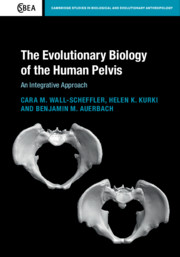Book contents
- The Evolutionary Biology of the Human Pelvis
- Cambridge Studies in Biological and Evolutionary Anthropology
- The Evolutionary Biology of the Human Pelvis
- Copyright page
- Dedication
- Contents
- Preface
- Introduction
- 1 Pelvis Anatomy
- 2 Functional Morphology of the Pelvis
- 3 Pelves of the Hominin Lineage
- 4 Developmental Biology of the Pelvis
- 5 Morphological Integration, Evolutionary Processes and Variation in the Human Pelvis
- Conclusions
- Appendix
- Works Cited
- Index
3 - Pelves of the Hominin Lineage
Published online by Cambridge University Press: 30 December 2019
- The Evolutionary Biology of the Human Pelvis
- Cambridge Studies in Biological and Evolutionary Anthropology
- The Evolutionary Biology of the Human Pelvis
- Copyright page
- Dedication
- Contents
- Preface
- Introduction
- 1 Pelvis Anatomy
- 2 Functional Morphology of the Pelvis
- 3 Pelves of the Hominin Lineage
- 4 Developmental Biology of the Pelvis
- 5 Morphological Integration, Evolutionary Processes and Variation in the Human Pelvis
- Conclusions
- Appendix
- Works Cited
- Index
Summary
This chapter examines the fossil record of hominoid and hominin pelvic remains from the Miocene through to the Late Pleistocene. The interpretation of functional demands shaping hominin pelvic morphology including locomotion, obstetrics and thermoregulation are discussed, as well as evidence for pelvic sexual dimorphism in hominin species. The long-standing view of a relatively linear pattern of hominin pelvic evolution from Australopiths, through early Homo, to Neanderthals, broken only by the appearance of the somewhat divergent morphology of Homo sapiens is examined in light of recent fossil pelvis discoveries that point to greater diversity in the hominin pelvic morphology. These fossils add to evidence from elsewhere in the postcranium that indicate there were multiple ways to be a bipedal hominin.
Keywords
- Type
- Chapter
- Information
- The Evolutionary Biology of the Human PelvisAn Integrative Approach, pp. 46 - 98Publisher: Cambridge University PressPrint publication year: 2020
- 1
- Cited by

